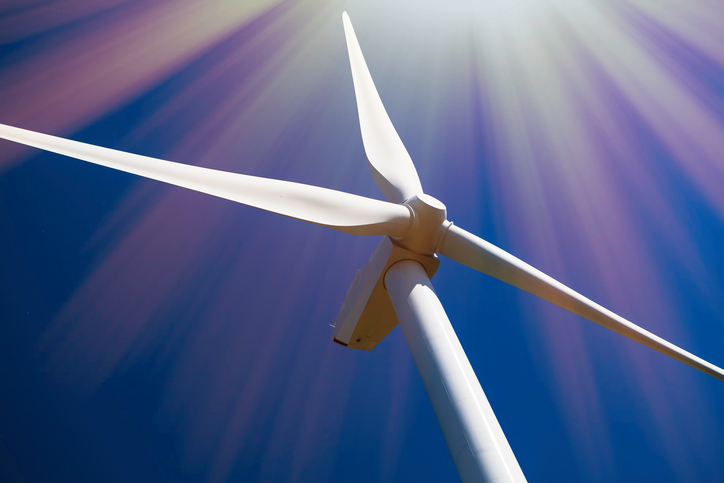DNV GL has released an in-depth study, commissioned by the U.S. Department of Energy’s Lawrence Berkeley National Laboratory, that examines the challenges associated with manufacturing and deploying onshore wind turbines that are increasingly growing in size.
In the past decade, the U.S. wind energy industry has achieved significant improvements in energy production and cost efficiency, driven in part by increased turbine, blade and tower size, the report explains. However, the industry is quickly approaching a logistical cost and capability ceiling as turbine components become too large for existing infrastructure and transportation to accommodate, according to the report.
Currently, the largest blades deployed in the U.S. are 67 meters, but blades up to 88.4 meters – or almost as long as a football field – have been deployed in Europe, and blades up to 115 meters are on the horizon. As turbine component sizes increase, logistical constraints can either reduce the number of developable sites or elevate costs – which can make some potential sites economically uncompetitive. Finding new solutions to logistical challenges associated with ever-larger components can enable the wind industry to achieve optimal levelized cost of energy (LCOE) options for every region of the U.S., says DNV GL.
DNV GL explored three innovation pathways to help identify high-value research and development (R&D) opportunities:
- Innovative transportation: Addressing physical constraints and challenges, new methods can facilitate the transportation of blades from factories to wind projects via road, rail or air.
- Segmented blades: Segmented or modular blades may enable the use of more cost-effective transportation, but they must also account for the impacts on design, manufacturing and on-site assembly.
- On-site manufacturing: Deploying a temporary blade manufacturing factory at the project site to fabricate blades from raw materials to finished product largely eliminates transportation challenges associated with longer blades.
“DNV GL identified a number of R&D activities that could make contributions to the viable development of supersized blades,” explains Ryan Wiser, senior scientist at Lawrence Berkeley National Laboratory. “These recommendations are feeding into the U.S. Department of Energy-funded ‘Big Adaptive Rotor’ project to assess and prioritize technology needed to develop a cost-competitive, land-based 5 MW turbine with 100-meter-long blades.”
According to the report, the acceleration of R&D to make supersized blades feasible requires collaboration between researchers in the U.S., turbine manufacturers, blade manufacturers and transportation logistics companies.
DNV GL points out that blades are the most critical component in determining the technical and economic performance of wind turbines. The logistics associated with supersized blades adds additional levels of complexity into the development process, which the industry and researchers must work collaboratively to address, the report explains.
“To realize continued progress in making wind energy cost-competitive across all regions in the U.S., the wind industry must accelerate R&D in innovative approaches to blade design, manufacture and transportation,” adds Richard S. Barnes, executive vice president for North American energy at DNV GL. “The good news is that there appears to be fertile ground for R&D and accessible solutions on the near horizon.”
According to the report, high-value R&D areas include as follows:
- Further advances in high-stiffness / low-cost materials, such as industrial carbon fiber and thermoplastics materials.
- Advanced controls and sensor technologies that could be applied to monitor or enable blade bending in transport or monitor or control segmented blade loads such that lower-weight blades can be achieved.
- Reducing the blade chord dimension would enable operation at higher tip speeds and improve blade transport potential, but issues related to aeroacoustics and leading-edge erosion need further improvement. Advanced aeroelastic modeling of dynamic stability and deflections can enable the development of more slender blades that can allow controlled deflection during transport.
More on the report can be found here.





I am curious as to why this industry is not looking at more blades per turbine, of smaller diameters? In the aircraft industry, when piston aircraft engine power was too much for a two-blade propeller, they went to 3, 4 and 5 blade designs? Some of todays turbo-prop aircraft use 6-blade propellers, both for power absorption and sound suppression, seems like this thinking may be a possible solution here?